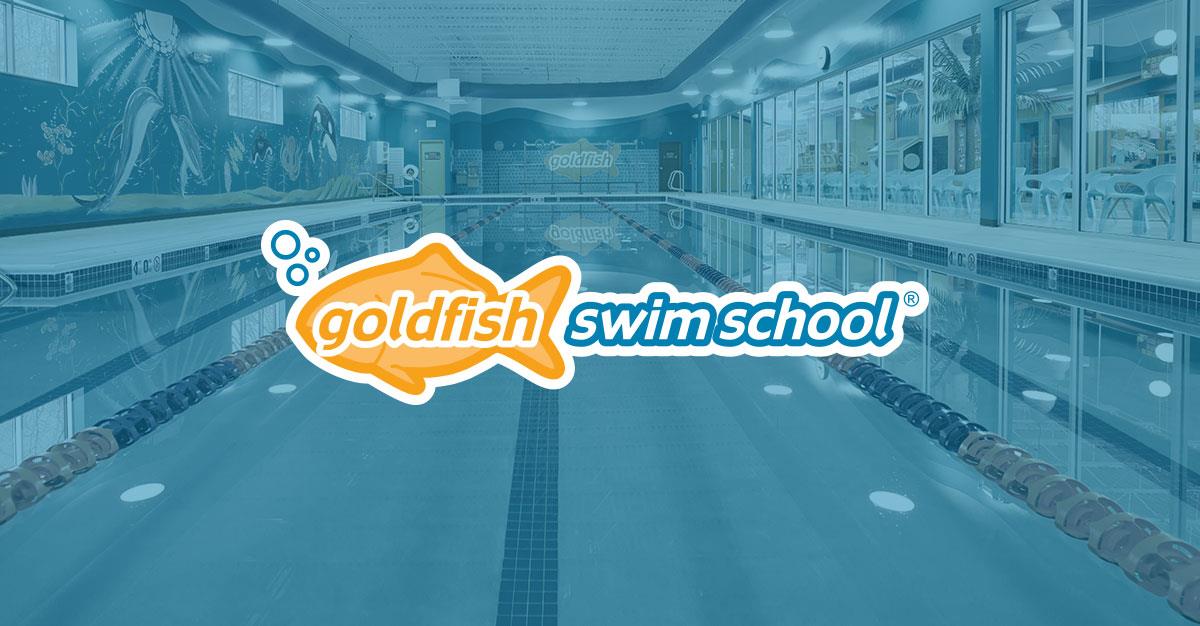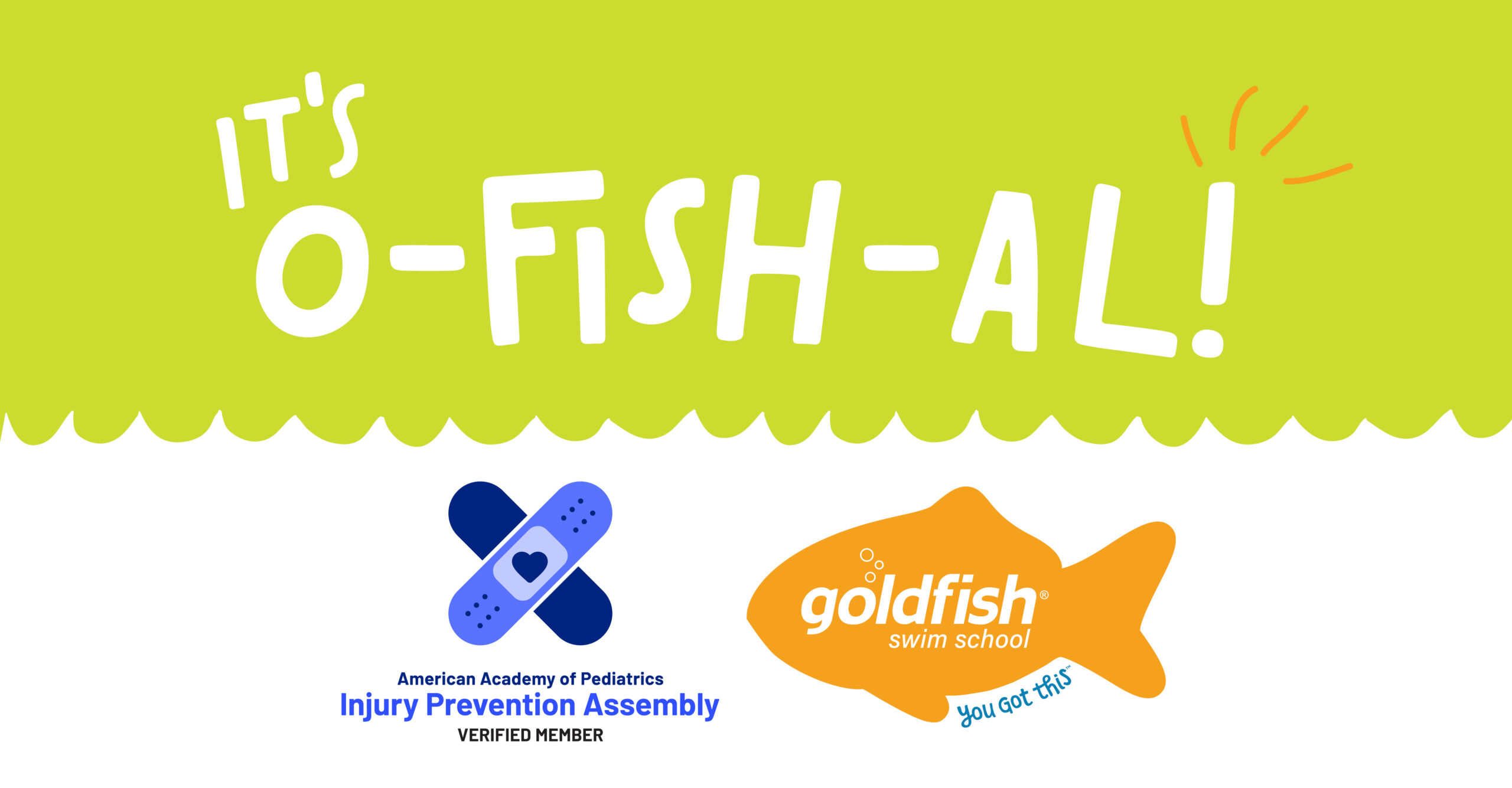10 Bath Safety Month Tips from a Board-certified Pediatrician

In honor of Bath Safety Month, we’ve invited our good friend Dr. Molly O’Shea of Birmingham Pediatrics + Wellness Center, the official pediatrician of Goldfish Swim School, to share her best advice for making bath time a safe, fun and educational experience for children.
I remember the first bath I gave a child of my own like it was yesterday. I balanced the infant tub in the kitchen sink, regulated the water temperature so it was just right, delicately undressed my sweet baby and placed them in the tub. I was nervous about everything-the water temperature, positioning them in the tub, the soap I was using, how long the bath would take out of fear of my babe getting too cold, and on and on.
The bath went quickly, and as I was dumping water to rinse them off, I worried about drowning for the first time. I could see the helplessness of my infant, the treasure I held in my hands. Knowing how much I loved my child and the water, I understood the importance of water safety in a way that I never had before.
From that moment forward, bath time was more than just getting clean and more than simply playing in the water with toys. Each bath had some element of water play that promoted comfort in the water and readied my kids for swimming.
All three of my children, each with very different temperaments, eventually adapted to the water and were eager to swim in big pools and open water at a very early age. They also knew that they could only be in the water with mom around, and that safety was more important than splashing. This was ingrained early on, and something we practiced, as well.
You can start this process with your own kids at any age. Starting when they’re infants is easier, but even an older child can adapt to bath time and begin learning about what it means to be safe in and around the water.
One of the things I try to stress with parents is that water doesn’t have to be deep to be dangerous, and that practicing water safety at home is just as important as it is at lakes and pools.
More than 43,000 children are injured in bathtub and shower-related injuries every year, and common household objects like bathtubs, toilets and buckets of water can be drowning hazards-especially for young children.
That being said, here are some of the steps you can take to help your children get ‘swim ready’ while keeping bath time safe!
- Never leave your little one alone in the bathtub, even for a moment. I know you would never think of leaving your child unattended while in the bath. But we’ve all faced a time when one child is in the bath and another child starts crying because they need your attention. In that moment, our instincts kick in and it’s important that your instinct is to grab the child out of the bathtub, and then go see what’s going on.
- Stay within arm’s reach whenever your child is near water, including the bathtub. Tell your kids they get a prize if they catch you looking away while giving them a bath. And even if you think they are wrong, if they call you out on it give them the reward.
- Safety proof the tub. Soft coverings for the faucet and non-skid mats for the bottom of the tub are worth it! Nothing is worse than a preventable injury to throw off your child’s interest in getting in the tub.
- Discourage standing in the tub. When your child stands in the tub, other than when it is time to get out, be firm and sit them back down. No fun or joking with this one. Understanding that they need to stay seated in the tub is important. If they stand again, end the bath for the day.
- Understand that baby seats are injury risks. Because so many baby seats are prone to tipping over, increasing the risk for drowning, it is better to have your baby in the tub on their own than in a baby seat.
- Condition your child to the water by gently pouring it on top of their head. From the time your child can sit up, don’t avoid the face when you rinse your child’s hair. Pour water on the top of their head so it runs over the face too. Getting your child used to water on their face is a great ‘swim ready’ step. If your child is upset/surprised at first, make it a game but don’t stop. Keep doing it and they will adapt within a few days.
- Help them practice floating on their backs. Start with the water level low so your child can lay on the bottom of the tub with the water around them. As they get more comfortable over time, raise the level of water in the tub so they can actually float. To help build their confidence, keep your hand behind their head near their neck.
- Practice blowing bubbles. During bath time, encourage your child to slowly blow air out of their nose and mouth as they put their faces to the water. Once they’re comfortable with that, let them put their face underwater to blow even bigger bubbles and celebrate their progress! While they’re having fun and becoming more confident putting their face in the water, they’ll also be busy building the foundation for proper breath control.
- Have bubble “slap” parties. At the end of bath time, put a little bit of bubble bath in the tub and have your child slap at the bubbles making splashes happen. These splash surprises are another great way to prepare them for the unexpected splashes in pools and lakes.
- Drain bath water when you’re done with the tub and install safety latches on bathroom doors to keep rooms closed when not in use. This will help minimize the chances of your child slipping out of sight and accessing standing water that could become a drowning hazard.
Bath time is a great time to bond with your child. Cherish these moments when you can, keep things safe and don’t forget to laugh. For more bath safety and water safety tips, visit HealthyChildren.org. And, if you’re ready to learn more about signing your little one up for swim lessons be sure to contact your local Goldfish Swim School.
Dr Molly O’Shea is a board-certified pediatrician and owner of Birmingham Pediatrics + Wellness Center in Bloomfield Hills, MI and Campground Pediatrics + Wellness Center in Washington Township, MI. Dr Molly has been in practice for over 25 years and has served at the state and national levels for the American Academy of Pediatrics. She was the ‘Ask the Pediatrician’ columnist for the Detroit News for many years and was a journal editor as well. Dr Molly is a lifelong swimmer, former triathlete, wife and mother.



